The Kodak Ektar H35 half-frame camera captivated photographers in 2022 with its retro simplicity. The little plastic film camera is sourced from an overseas manufacturer, Reto, not Kodak, to capitalize on film’s resurgent popularity. The H35 offers one button and one shutter speed (1/100 sec.), but no control of aperture, DX coding, macro, or self-timer.
Offered in four colors, the H35 resembles a mash-up of an Instamatic, a Vivitar Wide & Slim, and a Canon Demi. If you squint. I’m fond of half-frame and quarter-frame cameras as a storytelling option, but I balked at the $49.99 (USD) price for a startlingly basic camera . Rooting through my film camera vault, I unearthed a Canon Sure-Shot Multi-Tele camera I’d purchased in 2003 for $44 via eBay.
The versatile Multi-Tele – a late 1980s Canon plastic shooter – enables you to switch from full-frame to half-frame before loading a roll of 35mm film. It provides a dual-focal length lens (35mm f/3.5 for wide shots and 60mm f/5.6 telephoto lens), auto flash with defeat switch, and a self-timer. Plus, a Bulb mode seldom found on point-and-shoot cameras of the 1980s. Other features:
- A macro mode, mid-roll rewind, auto film advance, and a tiny kickstand below the hand grip for self-portraits.
- DX-coding for films ranging from ISO 50-3200. It’ll use slide/reversal film, too.
- Automatic shutter speeds from 1/60 – 1/350 sec.
The one demon of the Multi-Tele is its 6-volt 2CR5 lithium battery; available online, but don’t look for one at a Walgreens or Boots.
The Multi-Tele (badged as the Canon Prima Tele or Autoboy Tele 6 in other markets) is not a stealth camera. Hidden behind a porthole cover, the lens mechanism pops out with a pronounced whirr when the shutter button is fully pressed. It’s a noisy camera, including its auto advance. Autofocus is mostly accurate, although shiny surfaces can fool it, as some of my classic car photos suggest.
Film choice
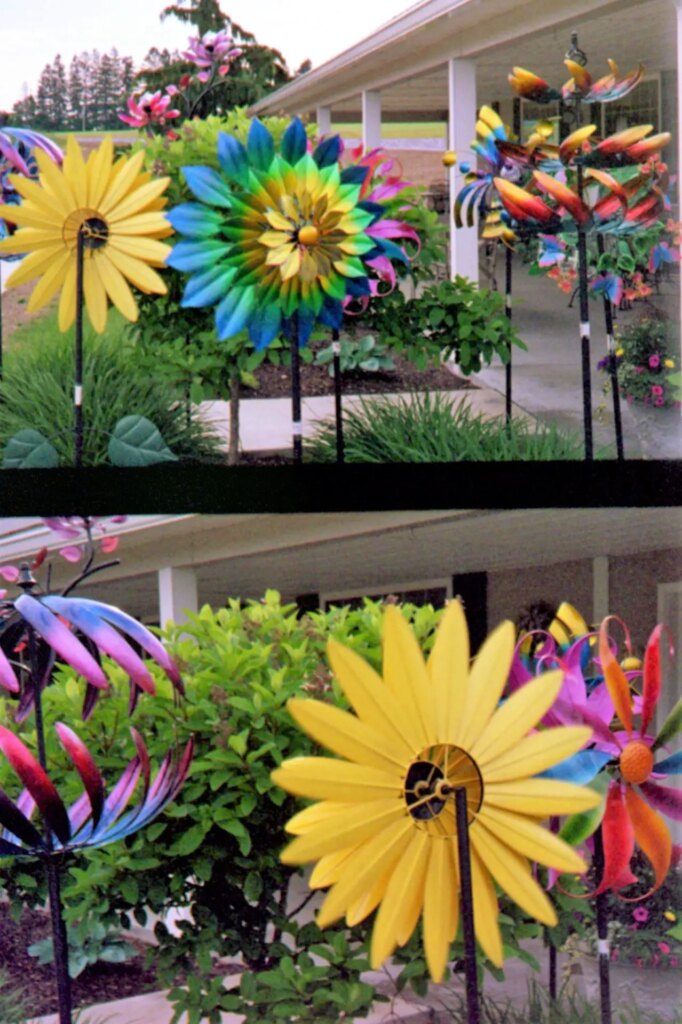
As a former employee of Kodak (before bankruptcy), I had a batch of unused color negative films at hand, all 10 years past their expiry date. If I’d been using an SLR camera, I’d just expose outdated ISO 200 film at ISO 100. To defeat the Multi-Tele’s auto DX coding, I applied a tiny patch of papery white sports tape over the camera’s exposure meter window (see photo at top). This forced the camera to set a slightly slower shutter speed, allowing daylight to reach the photocell without triggering the flash for every exposure.
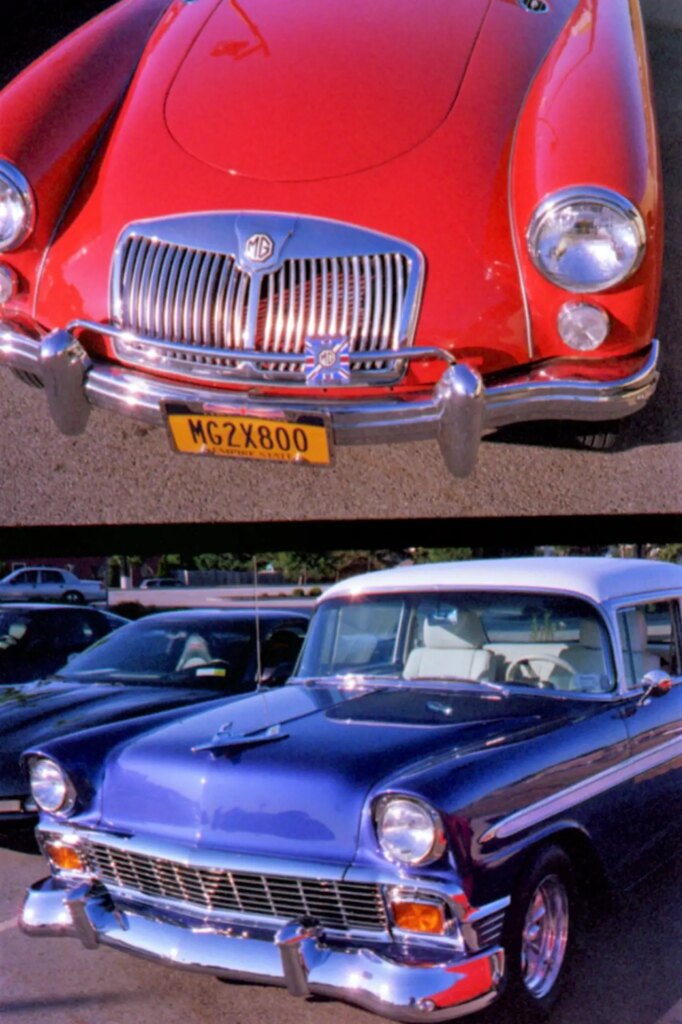
Camera in hand, I wandered through a car show in Portville, NY, which draws classic car owners from rural Pennsylvania, Ohio, and New York state. My 10-year-old Kodak Gold 200 film exhibited a magenta shift, and the resulting photos were slightly soft, but given the age of the film, satisfying. The Multi-Tele’s half-frame format helped to tell a two-part story in each print, such as the diptych of the red MG coupe and the beefy Chevrolet Bel-Air sedan, the front and rear photos of the Shelby AC Cobra racer, and the wide- and close-up shots of the red Pontiac GTO.
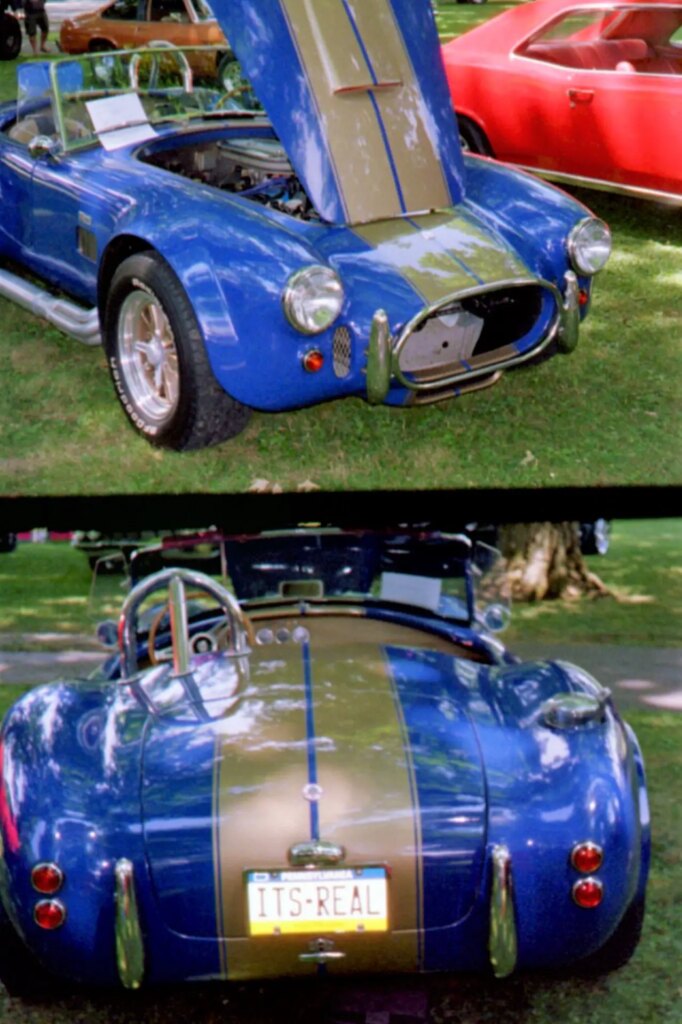
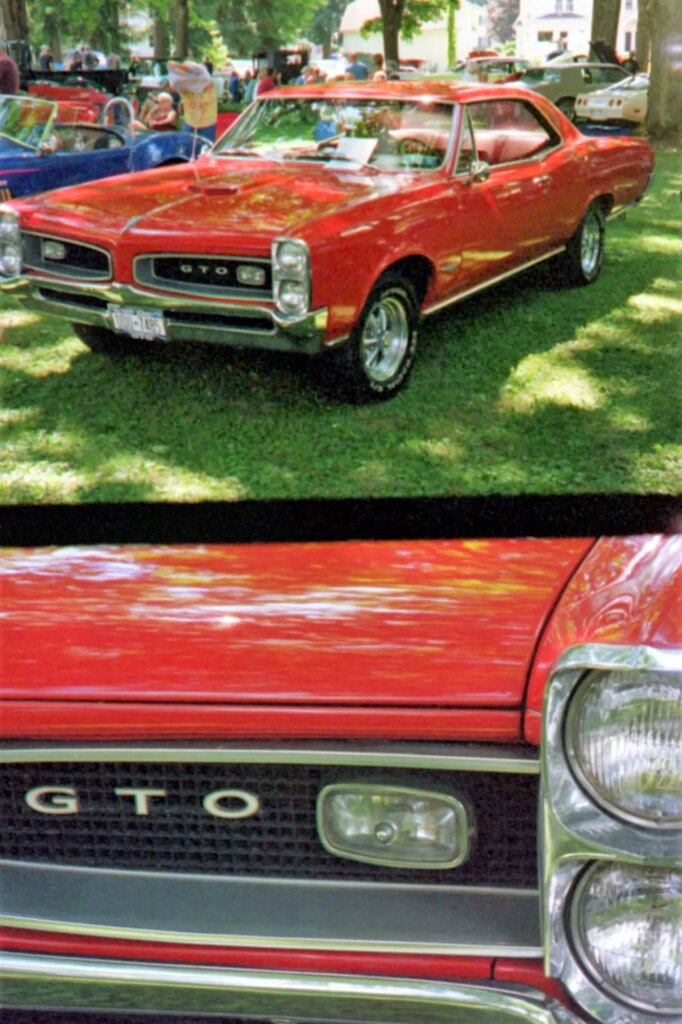
Some of my other photos were underexposed, even with my paper-taped light meter. Sunny backgrounds led to underexposed shots of vehicles parked under trees, and cars with darker finishes were rendered as shadow and uninteresting. Fresher ISO 400 film would have made a big difference. But I’m happy with my Canon Multi-Tele, and it’ll do nicely until a Kodak H35 drops in price.
Share this post:
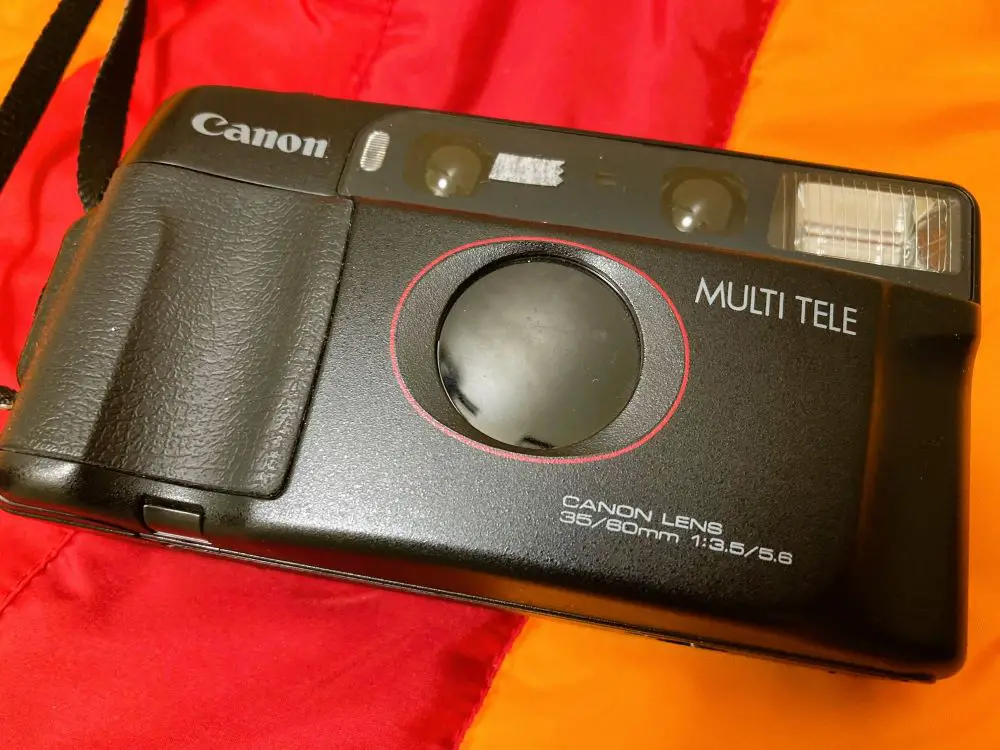








Comments
Kurt Ingham on Canon Multi Tele – The Long Half-Life of a Canon Half-Frame Camera
Comment posted: 27/04/2023